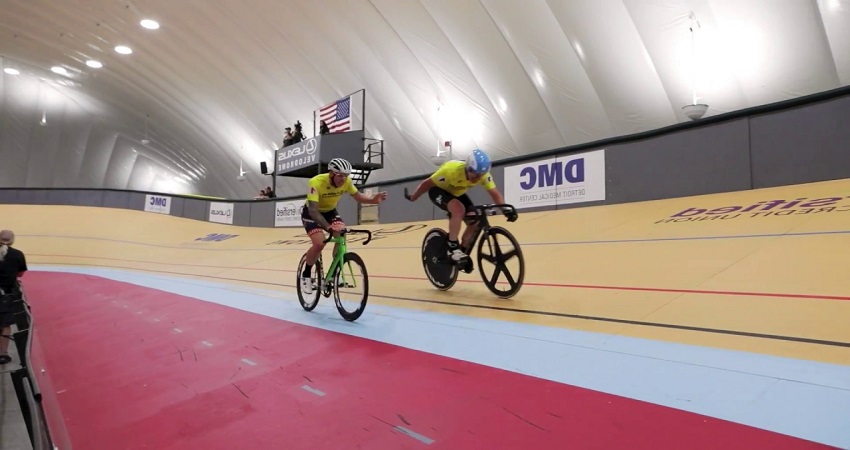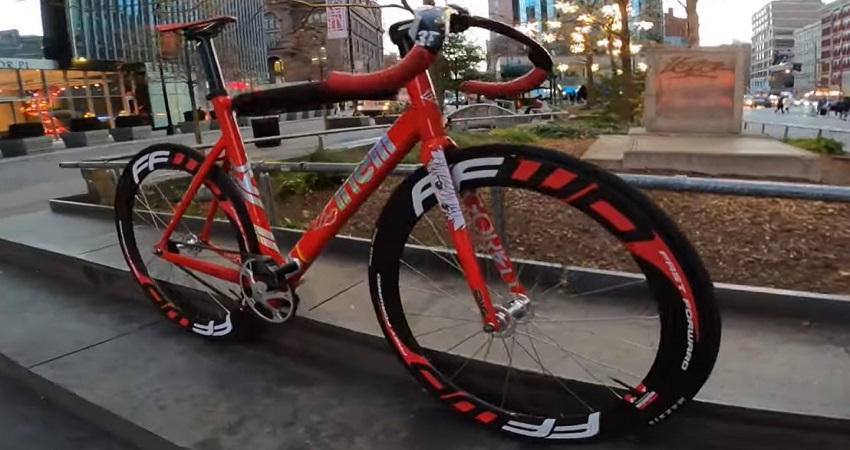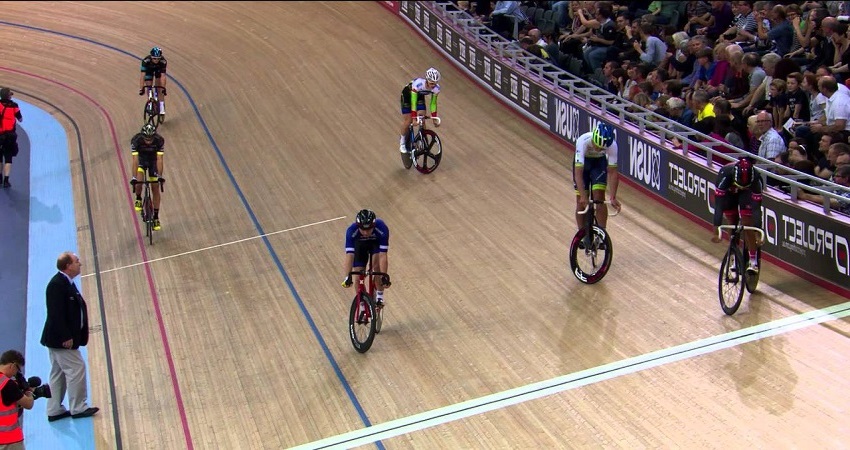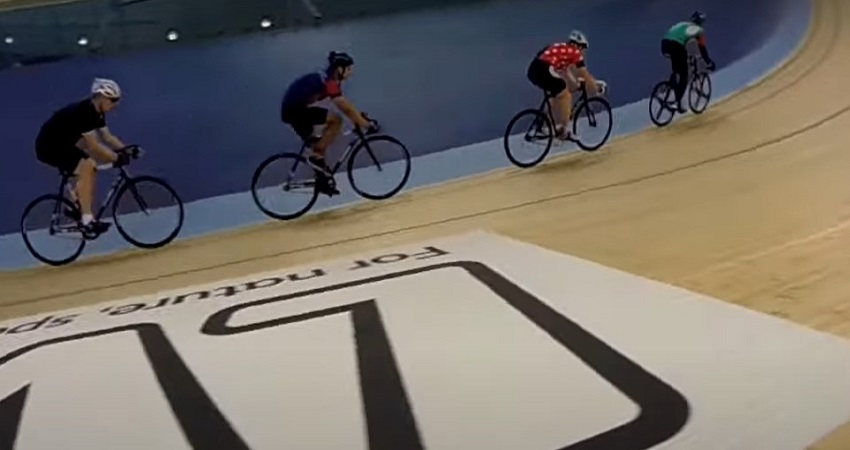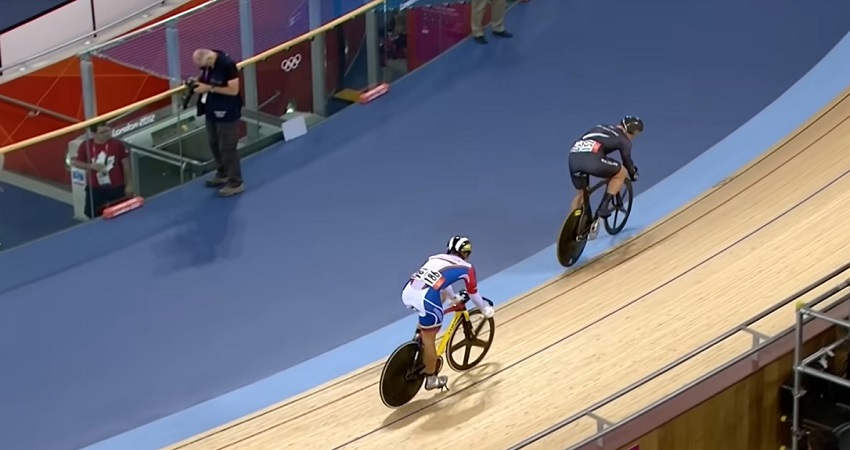
Yes, Velodrome bikes do have steering, allowing riders to control their direction while racing on the track. Velodrome bikes are specifically designed for the unique requirements of track cycling, with their steering systems providing optimal maneuverability and control.
For avid cycling enthusiasts and athletes, Velodrome racing offers an exhilarating experience on a purpose-built track called a velodrome. These specialized bikes are built to be agile and lightweight, allowing riders to reach peak speeds. One essential component of a velodrome bike is its steering system, which enables riders to navigate the track effectively.
While the design may differ from traditional road bikes, velodrome bikes feature a handlebar arrangement that allows riders to steer and maintain control over their direction. This ability to steer plays a crucial role in the strategy and dynamics of track cycling events, where riders often need to navigate tight corners and make split-second decisions. The steering mechanism on Velodrome bikes serves as a vital element that contributes to the overall performance of riders, enabling them to race at high speeds while maintaining control and precision.
Anatomy Of A Velodrome Bike
When it comes to velodrome biking, understanding the anatomy of the bike is essential. A velodrome bike, also known as a track bike, is specifically designed for racing on an indoor or outdoor velodrome track. These bikes are built for speed, agility, and precise handling, allowing riders to navigate the tight turns and high speeds of the velodrome.
Frame Design
The frame design of a velodrome bike plays a crucial role in the bike’s performance and handling. Velodrome bike frames are typically made from lightweight materials such as carbon fiber or aluminum. These materials ensure the bike is lightweight yet sturdy, giving riders the advantage of quick acceleration and maneuverability.
The geometry of the frame is another key aspect to consider. Velodrome bike frames have a unique geometry that differs from traditional road bikes. The frame is designed to keep the rider in an aerodynamic position, with a steep seat tube angle and a low front end. This positioning allows riders to maximize power transfer and reduce wind resistance, enabling them to achieve higher speeds on the track.
The frame design also incorporates specific features to enhance the bike’s handling. One notable feature is the absence of a freewheel or gears. Velodrome bikes have a fixed gear, meaning the rear wheel and pedals are directly connected. This creates a direct and immediate connection between the rider’s pedaling and the bike’s movement, enabling precise control and responsiveness.
Wheel Configuration
The wheel configuration of a velodrome bike is optimized for speed and stability. These bikes typically feature a set of deep dish carbon fiber wheels. The deep rim design improves aerodynamics by reducing drag and enhancing airflow over the wheels.
The use of a solid rear wheel is another notable characteristic of velodrome bike wheel configuration. Unlike traditional bikes with spokes, velodrome bikes have a solid disk rear wheel. This design reduces wind resistance and allows for more efficient power transfer while eliminating any potential for spoke-related issues during high-speed racing.
The tire selection is also crucial for optimal performance on the velodrome track. Velodrome bike tires are typically narrower than those used for road bikes, providing less rolling resistance. Additionally, these tires are inflated to a higher pressure to minimize contact with the track surface, allowing for smooth and efficient riding.
Understanding the anatomy of a velodrome bike is essential for both riders and enthusiasts alike. The frame design and wheel configuration are specifically optimized for speed, agility, and precise handling. With their unique features and lightweight construction, velodrome bikes allow riders to maximize their performance on the tracks and compete at their best.
Steering Mechanism Of Velodrome Bikes
Velodrome bikes are designed for speed and agility, and while they may not have traditional steering mechanisms like regular bikes, they do have a unique steering system. Using slight body movements and leaning, riders can navigate the track with precision and control.
When riding a velodrome bike, steering plays a crucial role in maintaining control and achieving optimal performance. Velodrome bikes are designed to be lightweight and aerodynamic, allowing riders to reach high speeds on the track. In this section, we will explore the key components of a velodrome bike’s steering mechanism and how they contribute to the overall handling of the bike.
Steering Tube And Fork
The steering tube and fork are essential components of a velodrome bike’s steering mechanism. The steering tube, usually made of aluminum or carbon fiber, connects the handlebars to the fork. It provides stability and support for the handlebars, allowing the rider to steer the bike smoothly.
The fork, on the other hand, attaches the front wheel to the frame. It consists of two blades that are curved forward, known as the fork legs. These legs extend from the fork crown, which is connected to the steering tube. The fork not only supports the front wheel but also helps absorb vibrations and impacts from the track, enhancing the overall comfort and control of the bike.
Handlebars
Handlebars are the primary means of steering a velodrome bike. They provide the rider with leverage and control over the bike’s direction. Velodrome bikes typically feature drop handlebars, which are curved downwards and forward. This design allows the rider to adopt a more aerodynamic position, reducing wind resistance and improving speed.
The handlebars are attached to the top of the steering tube, allowing the rider to grasp them comfortably. They are usually wrapped in handlebar tape for increased grip and cushioning. The length and width of the handlebars can vary depending on the rider’s preference and riding style.
| Handlebar Types | Description |
|---|---|
| Classic Drop Handlebars | Traditional curved handlebars that provide multiple hand positions for control and comfort. |
| Aero Handlebars | Sleek handlebars with elongated extensions that allow the rider to adopt a more aerodynamic position. |
| Bullhorn Handlebars | Straight handlebars that curve forward, providing a more upright riding position suitable for sprints. |
These handlebar variations cater to different riding styles and preferences, allowing riders to customize their velodrome bikes for optimum performance.
Differences From Traditional Bicycles
In the world of cycling, velodrome bikes stand out as a unique breed. Unlike traditional bicycles that we commonly see on the roads, velodrome bikes have distinct features and characteristics that make them well-suited for the velodrome racing track. Let’s explore some of the key differences that set velodrome bikes apart from their more conventional counterparts.
Fixed Gear System
One of the most distinguishing features of velodrome bikes is their fixed gear system. Unlike traditional bicycles that allow riders to switch gears, velodrome bikes are equipped with a fixed gear, meaning the rear cog and the rear wheel are directly linked, creating a direct and uninterrupted transfer of power from the cyclist’s legs to the wheels. This fixed gear system eliminates the need for derailleurs and simplifies the bike’s overall design.
Without the ability to change gears, cyclists must rely on their skill and strength to maintain speed and adjust their pace. This unique aspect of velodrome bikes requires riders to anticipate and adapt to changing conditions on the track, allowing for a more dynamic and engaging racing experience.
No Brakes
Another notable difference is the absence of brakes on velodrome bikes. While traditional bicycles are equipped with brake systems to regulate speed and enable safe stopping, velodrome bikes do not feature brakes. This deliberate design choice is rooted in the specific nature of track racing.
On a velodrome track, the steep banking or inclines in the turns allow riders to control their speed by leaning into the turn, utilizing centrifugal force to maintain stability. The absence of brakes reduces weight and allows for a more streamlined bike, optimizing speed and performance on the track.
However, it’s important to note that while velodrome bikes lack traditional brakes, riders still have means to slow down, primarily by exerting backward pressure on the pedals, a technique known as “resistance.” This technique requires precise control and coordination to maintain a safe and competitive pace.
Skills Required To Maneuver A Velodrome Bike
Velodrome bikes require specific skills to maneuver effectively, including control over speed, balance, and body positioning. Although Velodrome bikes do not have traditional steering mechanisms, riders use their body weight and subtle movements to navigate the track with precision.
Velodrome bikes, specifically designed for cycling on a velodrome track, are not your average road or mountain bikes. They require unique skills to maneuver effectively. In this section, we will discuss the essential skills needed to handle a velodrome bike, including balance and core strength, as well as cornering techniques.
Balance And Core Strength
Maintaining balance and having a strong core are crucial elements for successfully riding a velodrome bike. These bikes are fixed-gear and do not have brakes, which means riders rely heavily on their body control. Developing excellent balance and core strength allows riders to smoothly pedal and navigate the track at high speeds. To enhance balance and core strength, riders often include specific exercises in their training regimen. These can include planks, yoga poses, and stability ball exercises. By focusing on these areas, riders can improve their stability on the bike and feel more confident in their maneuvers.
Cornering Techniques
Cornering on a velodrome bike requires precise technique and skill. Riders must navigate tight turns at high speeds while maintaining control and avoiding crashes. Here are some cornering techniques commonly employed by velodrome cyclists:
- Lean into the turn: When approaching a corner, riders lean their bodies and bike into the turn. This shift in weight helps to maintain balance and prevent sliding out.
- Controlled speed: Before entering a corner, riders need to control their speed. They should decelerate before the turn and accelerate slightly as they exit, taking advantage of the centrifugal force.
- Look ahead: Keeping your eyes focused on the path ahead is important for successful cornering. By looking ahead, riders can anticipate the ideal racing line and plan their maneuver accordingly.
- Smooth pedal strokes: Maintaining smooth and efficient pedal strokes throughout the turn helps stabilize the bike and prevent loss of control.
- Practice and experience: Cornering skills improve with practice and experience. Each velodrome track has its unique features, and riders must adapt their technique to different track geometries and banking angles.
By mastering these cornering techniques, riders can navigate velodrome turns with precision and confidence, gaining an edge in both racing and training. Remember, proficiency in these skills requires consistent practice and dedication. Through targeted training and experience on the velodrome track, riders can develop the necessary abilities to handle their bikes with finesse and become accomplished velodrome cyclists.
Frequently Asked Questions Of Do Velodrome Bikes Have Steering?
Do Velodrome Bikes Have Steering?
Yes, velodrome bikes have steering, but it is different from traditional bikes. Velodrome bikes have a fixed gear and a rigid frame, which means they can’t freewheel or coast. The steering on velodrome bikes is more about balance and leaning into the curves, rather than turning the handlebars.
This design allows cyclists to maintain their speed and stability on the banked curves of the velodrome track.
Conclusion
To sum up, velodrome bikes do not have traditional steering mechanisms like handlebars. Instead, they rely on the rider’s body position and subtle shifts in weight to navigate the track smoothly. This unique design allows for improved aerodynamics and enhanced control at high speeds.
So, the next time you’re watching a velodrome race, take a moment to appreciate the precision and skill that goes into maneuvering these specialized bikes.
